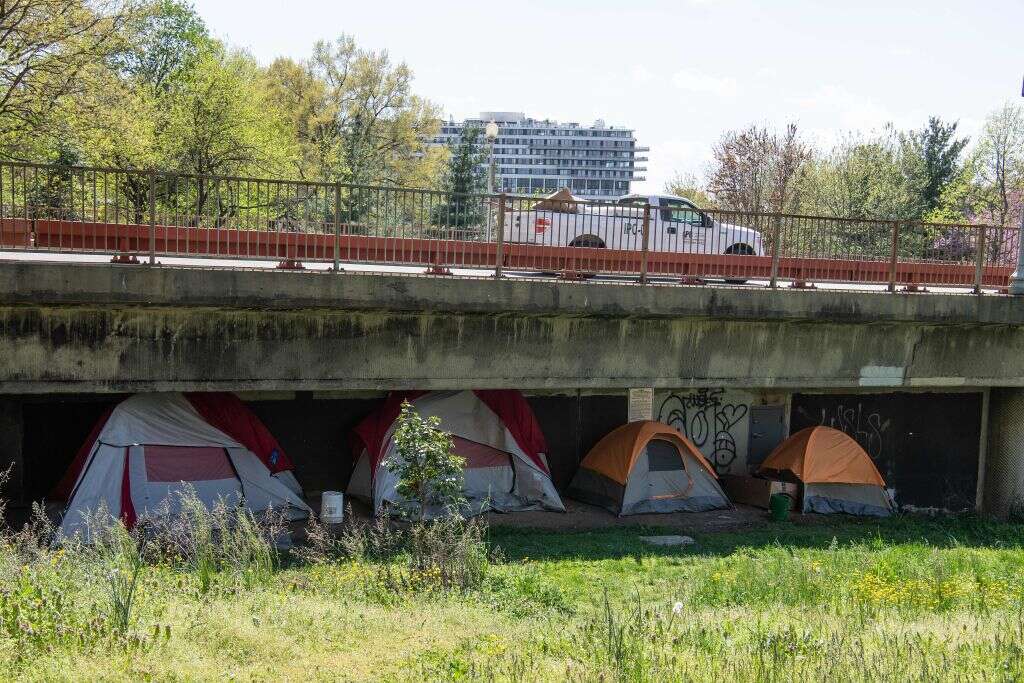

Normally this time of year, groups of volunteers around the US go out at night to tabulate and interview people sleeping in parks, under bridges or otherwise without proper shelter.
It’s an effort known as the Point in Time (PIT) count, and its results help the federal government determine funding for homelessness services across the country. But this year, as the pandemic is expected to cause a surge in the number of unhoused people, it has made conducting the tally unsafe.
More than half the entities that conduct the count have put in requests this year to alter their tabulation in some way. Large cities like LA and Seattle are cancelling their surveys altogether, while other places are delaying or carrying them out over more time.
An incomplete PIT tabulation will present challenges for the US Department of Housing and Urban Development (HUD), which uses the data to track homelessness over time, allocate funding to local organisations and create the Annual Homelessness Assessment Report. But the increased attention to this year’s tally also provides an opportunity for localities to recognise the limitations of the PIT measure in capturing the full scope of homelessness.
When you look at homelessness numbers, there’s going to be an asterisk for 2021. Steve Berg, National Alliance to End Homelessness
The Point in Time count always takes place over ten days in late January to offer a momentary snapshot of homelessness. Even before the pandemic, this model garnered criticism for the ways it significantly undercounts the unsheltered. Holding the tabulation in the coldest time of the year, for example, means that it excludes many who don’t have secure housing but do find temporary accommodation when they need it most. Those uncounted people may find shelter informally, in garages or vehicles, or may stay temporarily with friends or family in what’s known as “doubling up”.
Other measures of homelessness, even within the federal government, are more comprehensive. The 2019 PIT count recorded 567,715 unhoused people across the US, whereas the US Department of Education recorded some 1.5 million students experiencing this situation in the 2017–18 school year. Included in its definition of youth homelessness are children living in hotels, trailer parks or transitional shelters, as well as children who are doubling up. The Chicago Coalition for the Homeless also includes this doubling-up population in its estimates and found nearly 77,000 people experiencing homelessness in that city alone in 2018.
For local governments, consistent data collection is essential to measuring homelessness and the efficacy of services for the unhoused. The PIT count is required only every other year, but some places choose to do it annually in addition to other periodic tallies of homeless populations throughout the year. This year, HUD will consider alternative data sets submitted in lieu of a standard PIT tabulation. It is also encouraging places that do conduct a count to use sampling methods to extrapolate information.
For this year especially, localities may rely on other proxies for homelessness to understand the impact of the pandemic on their communities.
“When you look at homelessness numbers, there’s going to be an asterisk for 2021,” says Steve Berg, vice-president for programmes and policy at the National Alliance to End Homelessness. “There are other sources of data – people’s use of emergency programmes, day centres, things like that. I’m hoping this will make people more aware of what sources of information are still available.”
It’s unknown to what extent the pandemic will complicate this year’s PIT count, but HUD appears to be taking measures to ensure that a place’s inability to conduct a normal tally won’t cause a loss of funding. During a 12 January information session, a representative from HUD’s Office of Special Needs Assistance Program said the agency would do “all that’s in our legal power to ensure that people who do not conduct an unsheltered count due to safety are not penalised”.
The pandemic has brought more attention to the problem of unhoused people overall, especially on the federal level. On his second day in office, President Joe Biden signed a memorandum directing the Federal Emergency Management Agency to reimburse state and local governments for 100% of what they spend on emergency Covid-19 measures, up from 75% previously. In California, this may be used for hotel rooms leased by the government to house homeless people in the pandemic.
Berg says this year’s renewed attention to homelessness is also a chance for local authorities to pay closer attention to best practices about how to solve it.
“The pandemic is making people acutely aware of homelessness in their community and what the dangers are,” Berg says. “We can look at what communities have succeeded in reducing homelessness over a multi-year period, and there are many around the country.”






